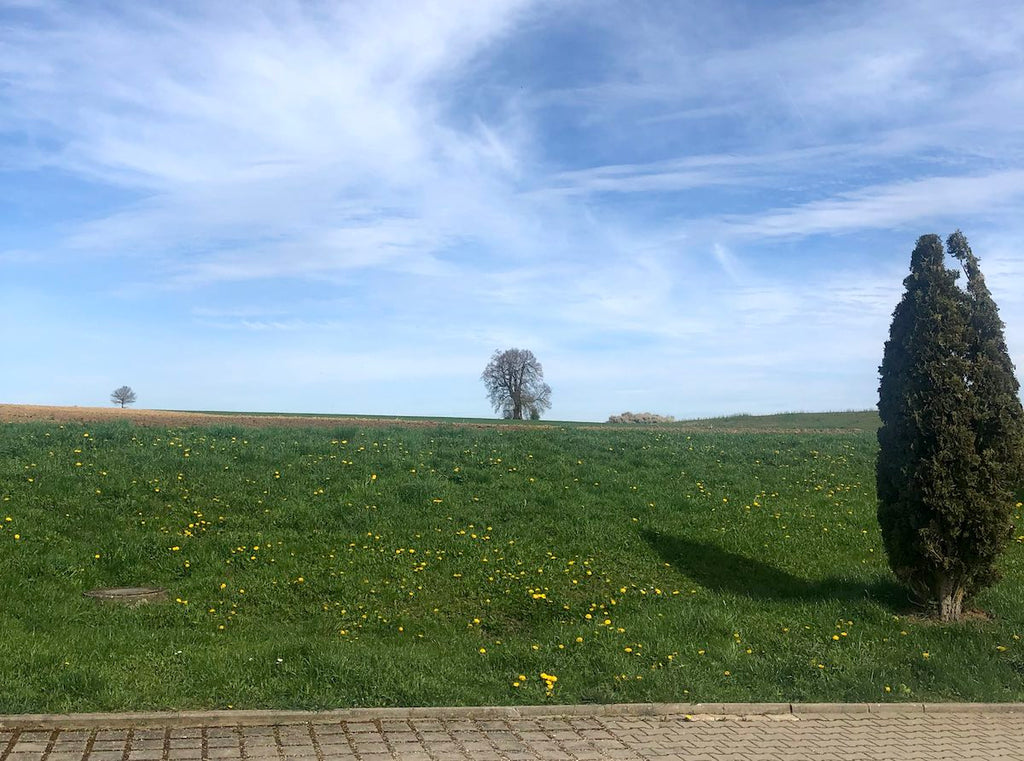Equipped with various route planning tools, a Tesla subscription and a good dose of pioneering spirit, we set off on our maiden journey in an electric car on November 24. Our first holiday trip in an electric car went from our home in Copenhagen to our apartment in the small, beautiful Ligurian town of Ospedaletti, which lies between Sanremo and the French border, on the Italian north coast. A trip totaling around 3,500 km.
Read along and get some inspiration to throw yourself into the electric car adventure on the European motorways.
We had, as so many others have probably also had, many considerations about having to go in and charge often, rather than what we have been used to to where we only refueled once en route to Italy. Would it be a pain and how much longer would the trip take and what about finding places to charge etc etc.
And let's just say it right away. Going on long-distance trips in an electric car proved to be a huge hit. Naturally, the trip takes a little longer, but since you are never the master of wind, weather, roadworks, accidents, etc., Google's optimistic times have never been right anyway.
But now we were, after all, about to step into the unknown, so we decided to give ourselves a little "extra time" to the trip by starting on Friday afternoon, rather than Saturday morning, as we would typically have done. That way we could reach down and spend the night a little north of Hamburg, and then mentally only start the trip on Saturday. I don't know if that makes sense, but it did for us ;)
On the way to Hamburg we had charged the car twice. Once in Odense and once in the German town Schillsdorf, so when the "real" trip started on Saturday morning, we had a good feeling that it would be a good trip.

From Volvo to Polestar
First, a little background on our car situation:
In November 2023 we replaced our luxury ride, a proper sled of a Volvo XC60, with a Polestar 2. And although the Polestar 2 is an ok big car, it is nothing compared to the great Swede, who is the king of long journeys on tarmac, where the comfort and overview are completely legendary.
We were therefore naturally very anxious to see if we had done the right thing in swapping 1,000 km range with quick refuelings for around 200 km range between charges, which takes 30-40 minutes.
When 440 km = 200 km
Here it gets a bit technical, but it is relatively important information:
When you drive an electric car or talk to others about electric cars, you often get into the range. Not so strange, since this is probably the area where electric cars differ the most from fossil cars.
We have chosen to buy an electric car with a relatively short range, because we don't drive very much on a daily basis, and therefore don't want DKK 30-40,000 tied up in a large battery that usually just stands in the basement under our apartment. On the other hand, we have to make a few more charging stops a day when we are on a long journey. Life is full of choices.
On paper, our car can travel 440 km on one charge! But this is only theoretical, and it requires charging the car to 100% and driving it to 0% during slow city driving - and that never happens.
Firstly, charging from 85% to 100% takes an enormous amount of time. Secondly, you don't drive the battery lower than 10% before charging again, and thirdly, most long journeys take place on motorways, which is why the range is significantly lower than the 440 km that is given.
When you, as we did on this trip, set off on winter tires in the cold months, where we both drove in rain, headwind and a small snowstorm - yes, then the usable range is closer to 200 km. In better conditions, the range increases.
But was a range of 200 kilometers a problem? The answer is a clear NO!
Because we are now the newbies we are, and thus took it a bit cautiously, and also made a few mishaps along the way, we ended up with 11-12 charges each way , which is probably a few more charges than necessary. But when we were out practicing, we followed the "Better safe than sorry" principle.

In an electric car, you get both the soul and the calm on the trip - if you are willing
For us, it turned out that 200 km is a very good range between our charging stops. Of course, 250 km would also be fine, and we might be able to reach that when we drive off again in the summer heat and the battery stretches a little longer.
For me, as one driver, it proved incredibly reassuring to constantly have a break to look forward to in the foreseeable future. When the car can drive 1,000 km on a full tank, breaks are something you have to take time for - in an electric car, breaks are something you are offered, and thank you for them!
I might just remember to write that I'm not the most patient person and that the many stops were something I feared would be a problem, but I am also someone who likes to try new boundaries. In this case, my curiosity helped me to a new and in many ways more relaxing form of travel.
In other words, an electric car is a completely different way of driving on a car holiday than we are used to - And we like it!

It is not the destination but the journey ……
We have always been really good at starting our holidays when we started the car from home, but there has certainly also been some thought about " let's get the German highways over with now". So we have been used to pleasant drives with breaks, but also trips where breaks also had to be completed relatively quickly.
In an electric car, the breaks take the time they take, so they are just naturally longer.
The fact that we chose to exclusively use Tesla's charging stations also contributed to a very different and experience-rich trip, because suddenly our breaks were not in cafeterias smelling of frying with the eternal €1 -vouchers for those who need to pee.
The offerings of food and drink at the charging stations were of very varying types, and we also experienced a charging station where there was no toilet. But conversely, there are also not many motorway service stations that are located in a field with grazing cows ;)

We forgot to photograph the cows, but here is Tesla Ellwangen
Electric car charging in Italy
Electric cars are only something the Italians are really taking to now, which is one of the reasons why there may be a little longer between Tesla charging stations than in other countries, but it is now ok to have stations as long as you drive on the major highways.
Actually, a fair network of charging stations is also being built out in the smaller districts, but it is clearly a slightly more uncertain system than the one we know from Denmark. There are longer between lightning charges, and often it's just a single stand in a supermarket car park.
However, we are lucky enough that in "our" small town there are as many as 4 lightning chargers, so we shouldn't complain, but I think a good tip would be to check the charging options from home, if your trip ends in a smaller city.
It also turned out that charging is actually relatively expensive in Italy, not when we could use our Tesla subscription, but with other providers. There were of course some options for other subscriptions at the local stands, but we refrained from that and were just happy that we could charge a few hundred meters from our apartment.

And then there are the overnight stays
Back then (and there were times) when we had our three children with us on the trips, it was necessary to plan the overnight stays, but now that it's just the two of us old, then the overnight part is much easier.
Hotels - we love staying in hotels. There is nothing as nice as taking a break at 6pm - and we now get them automatically, and they last about half an hour - where we pull out the computer and find the hotel for the night.
We use a booking portal, as we think it is by far the easiest way to get a quick overview - and a good offer. When we book so short a time before we check in and are very flexible, we often find pretty good hotels with delicious breakfasts at very cheap prices.
However, our new form of travel has given birth to a new idea for breakfast, because perhaps it is actually better to leave the hotel early and drive out to a charging point if you can find one close to a place that serves breakfast. Then you can eat while charging, and in that way save some time. We tried that model once on the trip and it worked fine.
We ended up staying two nights on the way to Italy. One in Quickborn and one in Bregenz (Amedia - can definitely be recommended), while on the return trip we settled for a single night in Lobinger. It then gave you a rather long last trip home, but it is a trade-off between whether you just want to go home or whether you want to take it a little more calmly. We are probably more inclined to take it a little more calmly in the future.

But what about the actual time spent on the roads?
I think that eating mile after mile is quite subjective, and if you already hate sitting in a car on a highway, I not sure that an electric car necessarily makes the experience much better - maybe just longer!
And I would like to be honest and write that if I could avoid 5-600 km of the German motorways, I would probably say yes, thank you, but generally we don't mind the hours on the road. After all, there is something adventurous about being on your way to something - which is why the trip out often feels a little cooler than the trip home ;)
For us, there is no doubt - electric cars and long-distance travel go together really well. There are of course differences between electric cars, but the fact that the engine noise is gone certainly helps to give a little peace of mind, and driving in the mountains was especially delicious, where we could really feel the silence of the car when we floated between the snow-covered mountain sides. Mountain driving in general has gone from fat to fatter with the electric car.
Not to mention the hills around Kassel. On with the speed and autopilot and then just slide through the hills.
As you can probably sense, we are already bitten by the excellence of the electric car and are looking forward to the next adventures we are going on. There are still many photo that have not yet been taken 😁






1 comment
Super artikel!
Og tak for at bruge tid på at inspirere andre!